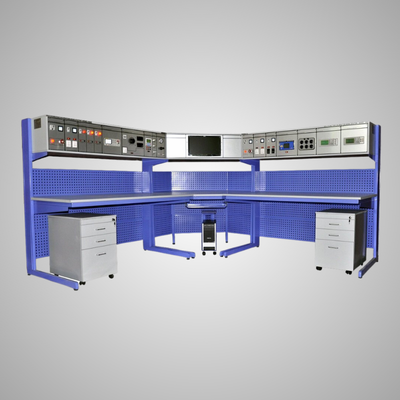Test Benches Industry Automation
Industrial Direct India provides products, solutions and services to meet a wide range of test bench application requirements, wherever the emphasis is on accuracy, dynamism and maximum availability.
Industrial Direct India provides products, solutions and services to meet a wide range of test bench applications across many industries. Based on long-term industrial expertise, our application teams can support you in your type and sample tests on finished products with proven results. Our test bench solutions are found wherever the emphasis is on accuracy, dynamism and maximum availability.
Key Technologies in Test Benches Industry Automation
Sensors
To monitor and measure parameters like temperature, pressure, speed, and vibration during tests.
Control systems
Programmable logic controllers (PLCs) or industrial PCs that manage the operation of automated test benches.
Machine vision
For automated inspection of components to detect surface defects and ensure dimensional accuracy.
Data acquisition systems
To collect, log, and analyze data from tests in real-time.
Applications of Test Bench Industry Automation
Automotive Industry
Automated test benches in the automotive industry are used to evaluate components like engines, transmissions, and electrical systems under various operating conditions.
Aerospace Industry
In aerospace, automated test benches are used to test parts such as turbines, avionics, and structural components. Automation allows for more rigorous and repeatable testing of high-performance components that need to withstand extreme conditions such as high pressure, temperature, and stress.
Electronics Industry
Automated test benches are widely used in the electronics industry for testing circuit boards, semiconductors, and other components.
Industrial Machinery
In the industrial machinery sector, automated test benches are used to test hydraulic systems, pumps, motors, and valves. These test benches simulate real-life working conditions to ensure that components can handle operational stresses and perform reliably.
Improved Safety
Automation in test benches also enhances safety by minimizing human exposure to hazardous testing environments. Automated systems can operate in dangerous conditions, such as high temperatures or pressure, reducing the risk of accidents and ensuring that employees are not exposed to unsafe environments.
Benefits of Test Benches Industry Automation

Increased Testing Efficiency
Automated test systems can conduct a series of tests without the need for constant human intervention, reducing the overall time needed for testing and improving throughput.
Improved Accuracy and Consistency
Manual testing can introduce variability and human error, which compromises test results. Automated test benches eliminate these inconsistencies by performing tests with precision and repeatability.
Cost Savings
Automation helps reduce the costs associated with manual labor, including the need for skilled technicians to monitor tests and make adjustments during the process.
Increased Flexibility
Automated test benches are highly flexible and can be easily reconfigured to accommodate different test scenarios, product types, or testing standards.
FAQ
How does test bench automation enhance safety in testing environments?
Automation improves safety by reducing the need for human involvement in dangerous or hazardous testing environments. For example, automated test benches can operate in high-temperature, high-pressure, or chemically hazardous conditions, where human workers may be at risk. Additionally, automated systems often include safety features such as emergency stop mechanisms, sensors to detect abnormal conditions, and remote monitoring capabilities to ensure safe operations.
How does automation help reduce testing time?
Automated test benches can perform tests continuously and without interruption, reducing the time required for each test cycle. They can also run multiple tests simultaneously or sequentially with minimal downtime between processes. Automated systems can repeat tests with exact parameters, improving throughput while ensuring that each test is completed within the same time frame.

